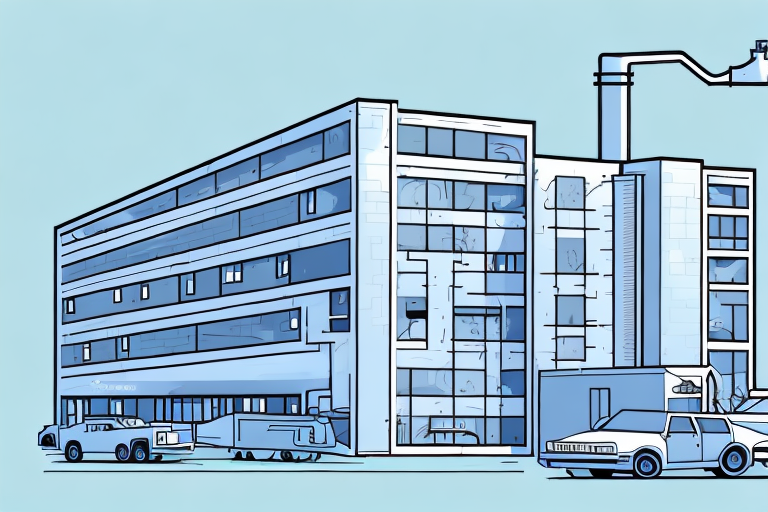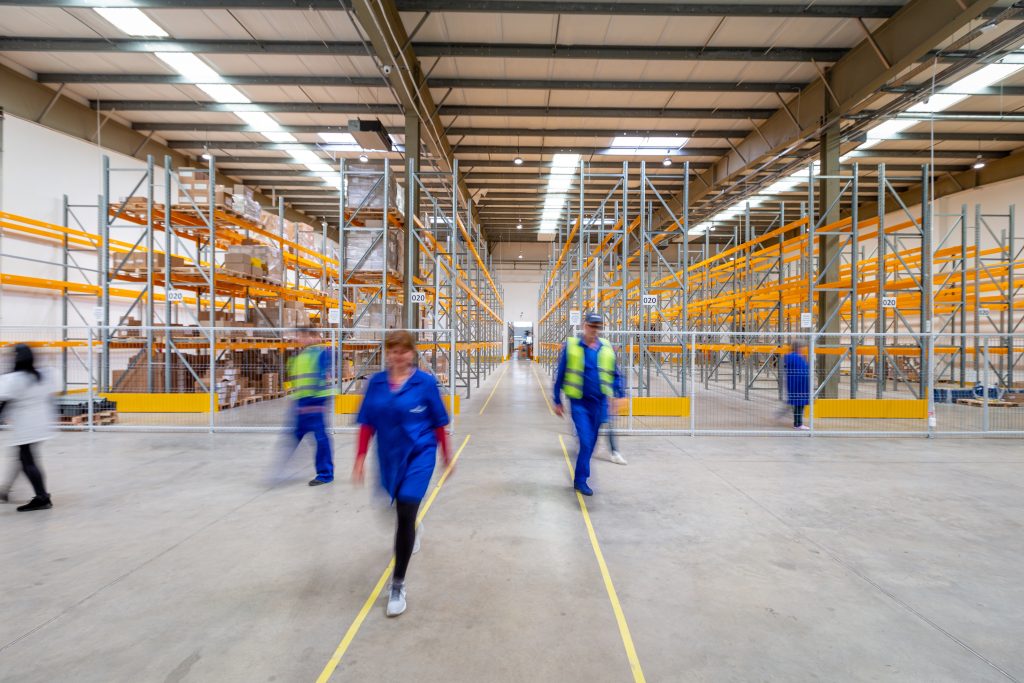Industrial Properties for Sale in Perth: Exploring Lucrative Opportunities
If you’re an investor or business looking to expand your operations in Perth, industrial properties present a lucrative opportunity. With a thriving economy and growing demand for warehousing, manufacturing, and distribution facilities, the city offers a range of properties to suit different needs and budgets. In this article, we’ll explore the Perth industrial property market, the types of properties available, and the key factors driving demand. We’ll also examine how to evaluate investment potential, navigate the buying process, and manage your industrial property investment for success.
Understanding the Perth Industrial Property Market
Perth’s industrial property market has experienced strong growth in recent years, driven by the city’s economic expansion and infrastructure developments. According to industry experts, the market is expected to continue performing well in the coming years, with rising demand from logistics and e-commerce sectors.
Perth is the capital city of Western Australia, and it is known for its beautiful beaches, stunning parks, and vibrant cultural scene. The city is also home to a thriving industrial property market, which has become a key player in the state’s economy.
Key Factors Driving Demand
One key factor driving demand is the growing need for e-commerce fulfilment centres and distribution facilities to cater to online retail demand. The rise of e-commerce has brought about a new wave of competition and supply chain requirements, resulting in a heightened demand for quality warehousing and logistics facilities.
Another factor driving demand is the city’s geographic location, with Perth serving as a gateway to the Asia-Pacific region. As a result, there is a significant demand for manufacturing and processing facilities that can cater to the needs of import/export businesses.
Furthermore, Perth’s industrial property market has been boosted by the city’s strong population growth and employment opportunities. With more people moving to the city and seeking employment, there is a greater demand for industrial properties that can accommodate businesses and their employees.
Market Trends and Predictions
The Perth industrial property market has witnessed significant growth in recent times, with rental yields and capital growth outperforming some of the other sectors in the industry. In particular, warehouse assets have been a highlight, fetching premium prices from buyers.
Industry experts predict that the market will continue to perform well, owing to the city’s strong economic prospects and infrastructure spending. Aside from warehousing and logistics facilities, there is an increasing demand for specialized assets such as cold storage and food processing units, fueling the growth of the market.
Moreover, the city’s focus on sustainable development and green initiatives has also impacted the industrial property market. Businesses are increasingly seeking properties that are energy-efficient, environmentally friendly, and sustainable.
Top Industrial Suburbs in Perth
While Perth’s industrial property market has several booming suburbs, there are a select few that stand out in terms of popularity and value. These include Welshpool, Kewdale, Malaga, and Wangara. These suburbs are located close to major transport routes, offer a range of property types and sizes, and provide excellent amenities to businesses and employees.
Welshpool, for instance, is located just 10km from the city centre and is home to a range of businesses, including manufacturing, logistics, and wholesale. The suburb is well-connected to major transport routes, including the Great Eastern Highway and the Tonkin Highway, making it an ideal location for businesses seeking easy access to the city and other parts of the state.
Kewdale, on the other hand, is located just 8km from the city centre and is known for its industrial estates, which house a range of businesses, including transport, logistics, and warehousing. The suburb is also home to the Perth Airport, which makes it an ideal location for businesses that require air freight services.
Malaga and Wangara are located in the northern suburbs of Perth and are known for their industrial parks, which offer a range of property types and sizes. The suburbs are well-connected to major transport routes, including the Mitchell Freeway, making them an ideal location for businesses seeking easy access to the city and other parts of the state.
Types of Industrial Properties Available
Industrial properties are essential for businesses involved in manufacturing, warehousing, and distribution. These properties come in various types and sizes, each catering to specific business needs. Let’s take a closer look at some of the different types of industrial properties available:
Warehouses and Distribution Centers
Warehouses and distribution centers are highly sought-after industrial properties, catering to the needs of logistics companies and e-commerce businesses. These properties offer spacious interior layouts and high ceilings to maximize storage capacity and accommodate large vehicles for loading and unloading. In addition, modern warehouses often come equipped with advanced lighting and ventilation systems to support efficient operations.
Did you know that the first warehouses were built during the industrial revolution to store raw materials and finished goods? The development of railroads and steamships made it easier to transport goods over long distances, leading to an increase in demand for warehouse space.
Manufacturing Facilities
Manufacturing facilities involve heavy investment and are key assets for businesses that rely on production and assembly processes. As a result, these properties require large floor areas, high ceilings, and spacious interiors to accommodate machinery, equipment, and production lines. They often come equipped with advanced electrical and plumbing systems to support high-powered machinery, and ventilation systems to regulate air quality.
Manufacturing facilities have come a long way since the early days of the industrial revolution. Today, businesses can take advantage of advanced technology such as robotics and automation to streamline production processes and increase efficiency.
Cold Storage and Food Processing Units
Cold storage and food processing units are specialized assets designed for businesses involved in food storage and processing. These properties are typically equipped with temperature-controlled environments to ensure food safety and quality. Additionally, they feature advanced refrigeration, heating, and ventilation systems to support the preservation and transport of perishable goods.
The food industry has strict regulations when it comes to food safety and quality. Cold storage and food processing units play a crucial role in ensuring that food products are stored and processed in a safe and hygienic environment.
Showrooms and Retail Spaces
Showrooms and retail spaces are mainly used for exhibiting products to potential buyers. When choosing a showroom or retail space, you need to consider factors such as location, accessibility, and the size and design of the property. Additionally, properties located along busy streets and in popular shopping districts are more likely to attract high foot traffic and generate profitable returns.
Showrooms and retail spaces have evolved over time to meet changing consumer needs and preferences. Today, businesses can take advantage of technology such as virtual reality and augmented reality to create immersive shopping experiences for their customers.
As you can see, there are many different types of industrial properties available to businesses. When choosing a property, it’s important to consider your specific business needs and requirements to ensure that you find the right fit.
Evaluating Investment Potential
Investing in industrial property can be a lucrative endeavour, but it requires careful consideration of various factors to ensure that you make the right investment decision. In this article, we will explore some of the essential factors that you need to consider when evaluating investment potential.
Rental Yields and Capital Growth
One of the critical factors to consider when evaluating investment potential is rental yields and capital growth. Rental yields refer to the income generated from rental payments, while capital growth refers to the increase in the value of your industrial property asset over time. High rental yields and capital growth are crucial to ensure that you get a good return on your investment. To achieve this, you need to choose the right property in a high-demand area and ensure that it is well-maintained and managed.
When choosing a property, you need to consider factors such as location, accessibility, and the condition of the property. A property located in a high-demand area with good transport links, such as highways, railways, airports, and ports, is more likely to have a high rental yield and capital growth. Additionally, a well-maintained property is more likely to attract high-quality tenants who are willing to pay a premium for a high-quality space.
Occupancy Rates and Tenant Demand
Another important factor to consider is the occupancy rates and tenant demand in the area. A property located in a high-growth area with high tenant demand is more likely to have a stable and consistent occupancy rate, resulting in better rental yields and returns. Therefore, to evaluate your investment potential, you need to research the area’s demographics, market trends and projections, and tenant demand.
It is also essential to consider the competition in the area. If there are many similar properties in the area, it may be challenging to attract tenants and maintain a high occupancy rate. On the other hand, if there are few similar properties in the area, you may be able to charge a premium rent and achieve a high occupancy rate.
Infrastructure Developments and Connectivity
Infrastructure developments and connectivity are key factors to consider when evaluating your investment potential. You need to examine the transport infrastructure in the area, such as highways, railways, airports, and ports. Additionally, you should research planned infrastructure developments, such as new road or rail links, as these can positively impact property values and tenant demand.
Furthermore, you need to consider the local amenities in the area, such as shops, restaurants, and leisure facilities. Properties located in areas with good local amenities are more likely to attract tenants and achieve a high occupancy rate.
In conclusion, evaluating investment potential requires careful consideration of various factors, including rental yields, capital growth, occupancy rates, tenant demand, infrastructure developments, and connectivity. By researching these factors and making an informed investment decision, you can maximise your returns and achieve long-term success in the industrial property market.
Navigating the Buying Process
Finding the Right Property
Finding the right industrial property can be a daunting task, but with the right research and guidance, it can be a smooth process. Start by researching the market and identifying the areas that have the potential for growth and development. This will help you narrow down your search to specific regions or neighborhoods that match your investment criteria.
Consulting with experts in the industry, such as real estate agents and property managers, can also be helpful in identifying suitable properties. They have access to a wealth of information and can provide you with valuable insights into the market and the properties available.
When evaluating potential properties, it’s essential to consider the location, condition, and price of the property. You should also look at the long-term potential for returns, such as the property’s proximity to transportation hubs, access to labor, and the potential for future development in the area.
Due Diligence and Inspections
Once you have identified a suitable property, it’s important to conduct due diligence and inspections to ensure that it is fit for purpose. This involves examining the property’s legal documentation, zoning, compliance, and planning requirements.
You should also conduct thorough inspections of the property to identify any damages or defects that may require repairs or remediation. This will help you avoid any unexpected costs or delays down the line and ensure that the property is in good condition before you make your purchase.
Financing Options and Tax Considerations
Before finalizing your purchase, it’s important to consider the financing options and tax implications of the investment. You need to evaluate the mortgage and financing options available to you and select the one that best matches your investment goals and budget.
Additionally, you need to consider the tax implications of your investment and seek professional advice to optimize your investment structure. This can help you minimize your tax liability and maximize your returns.
Overall, navigating the buying process for industrial property requires careful consideration and planning. By doing your research, consulting with experts, and evaluating your investment goals and budget, you can find the right property and make a sound investment that will provide long-term returns.
Managing Your Industrial Property Investment
Property Management and Maintenance
To maximize your investment returns, you need to ensure that your industrial property is well-maintained and managed. This involves regular inspections, repairs, and maintenance tasks to ensure that the property remains in optimal condition for tenants. You may consider engaging a professional property management team to handle rent collection, maintenance, and tenant relations.
Attracting and Retaining Tenants
To attract and retain tenants, you need to offer a competitive rental rate, maintain the property to a high standard, and provide excellent customer service. Consider offering additional benefits such as parking, storage, and security to attract new tenants. Additionally, you should maintain good tenant communication and resolve any issues promptly to ensure tenant satisfaction and retention.
Maximizing Return on Investment
Finally, to maximize your returns on investment, you need to continually monitor and evaluate your property performance. This involves tracking the cash flow, rental yield, and capital growth, and making strategic decisions based on market trends and projections. Additionally, you may consider refurbishing or repositioning your property to increase its value and tenant demand.
Case Studies: Successful Industrial Property Investments in Perth
Example 1: A Warehouse Turned Profitable Business Hub
A Perth-based investor purchased a warehouse in a high-growth area and refurbished it to create a modern business hub. The property featured spacious interiors, high ceilings, and advanced lighting and ventilation systems. The refurbishment included adding a mezzanine level and partitioning the property into multiple spaces to cater to a diverse range of tenants. The investor’s strategic approach to refurbishing the property resulted in higher rental yields and excellent tenant demand.
Example 2: A Manufacturing Facility with High Capital Growth
A Perth-based investor purchased a large manufacturing facility near the city centre, catering to the needs of local and export businesses. The property featured high ceilings, heavy load-bearing floors, and advanced electrical systems to support high-powered machinery. The investor capitalized on the property’s location and proximity to major transport routes and engaged a professional property management team to ensure efficient operations. The strategic approach resulted in steady rental yields and significant capital growth.
Example 3: A Cold Storage Facility with Strong Tenant Demand
A Perth-based investor purchased a specialized cold storage facility catering to the specific needs of perishable goods businesses. The property featured advanced refrigeration, heating, and ventilation systems to ensure food safety and high quality. The property’s location and design catered to the needs of businesses involved in export and distribution, resulting in strong tenant demand and high rental yields. The investor’s strategic approach to tenant management and maintenance resulted in excellent tenant retention and steady returns.
Conclusion
In conclusion, industrial properties in Perth present a lucrative investment opportunity, offering a range of asset types to suit different needs and budgets. To maximize your investment returns, it’s essential to consider the key factors driving demand, evaluate your investment potential, navigate the buying process, and manage your property investment for success. With the right approach, investing in industrial properties in Perth can be a profitable and rewarding venture for investors and businesses alike.





